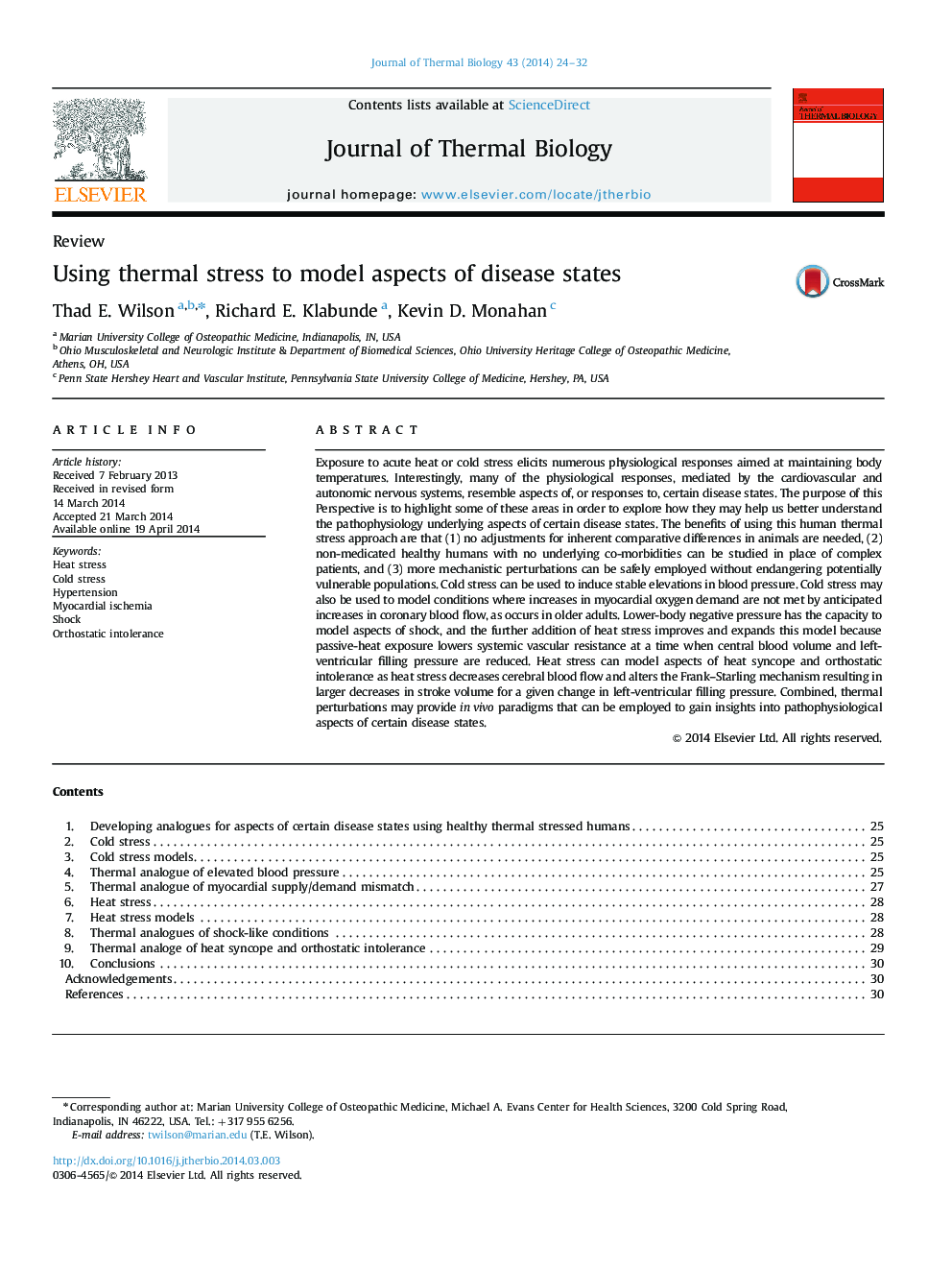| کد مقاله | کد نشریه | سال انتشار | مقاله انگلیسی | نسخه تمام متن |
|---|---|---|---|---|
| 2842959 | 1571102 | 2014 | 9 صفحه PDF | دانلود رایگان |
• Thermal stress can elicit physiological responses that resemble aspects of certain disease states.
• Cold stress can be used to induce stable elevations in blood pressure.
• Cold stress may also be used to alter myocardial oxygen supply and demand in older adults.
• Heat stress expands on current hemorrhagic shock models and can mimic aspects of early septic shock.
• Heat stress can also lead to conditions of heat syncope and general orthostatic intolerance.
Exposure to acute heat or cold stress elicits numerous physiological responses aimed at maintaining body temperatures. Interestingly, many of the physiological responses, mediated by the cardiovascular and autonomic nervous systems, resemble aspects of, or responses to, certain disease states. The purpose of this Perspective is to highlight some of these areas in order to explore how they may help us better understand the pathophysiology underlying aspects of certain disease states. The benefits of using this human thermal stress approach are that (1) no adjustments for inherent comparative differences in animals are needed, (2) non-medicated healthy humans with no underlying co-morbidities can be studied in place of complex patients, and (3) more mechanistic perturbations can be safely employed without endangering potentially vulnerable populations. Cold stress can be used to induce stable elevations in blood pressure. Cold stress may also be used to model conditions where increases in myocardial oxygen demand are not met by anticipated increases in coronary blood flow, as occurs in older adults. Lower-body negative pressure has the capacity to model aspects of shock, and the further addition of heat stress improves and expands this model because passive-heat exposure lowers systemic vascular resistance at a time when central blood volume and left-ventricular filling pressure are reduced. Heat stress can model aspects of heat syncope and orthostatic intolerance as heat stress decreases cerebral blood flow and alters the Frank–Starling mechanism resulting in larger decreases in stroke volume for a given change in left-ventricular filling pressure. Combined, thermal perturbations may provide in vivo paradigms that can be employed to gain insights into pathophysiological aspects of certain disease states.
Journal: Journal of Thermal Biology - Volume 43, July 2014, Pages 24–32
